Moderately strong M7.1 solar flare erupts from AR 3288
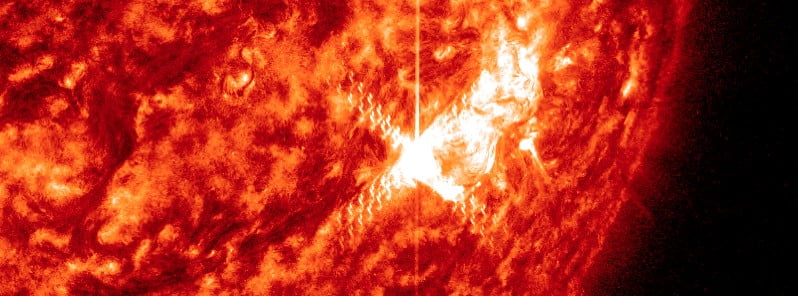
A moderately strong solar flare measuring M7.1 erupted at 13:09 UTC on May 1, 2023. The event started at 13:02 and ended at 13:13 UTC.
There were no radio signatures that would suggest a coronal mass ejection (CME) was produced.
Even if it was, the location of this region does not favor Earth-directed CMEs. The region is approaching the west limb and will start its farside rotation in a couple of days.
It has a beta-gamma-delta magnetic configuration and is capable of producing strong to major eruptions.
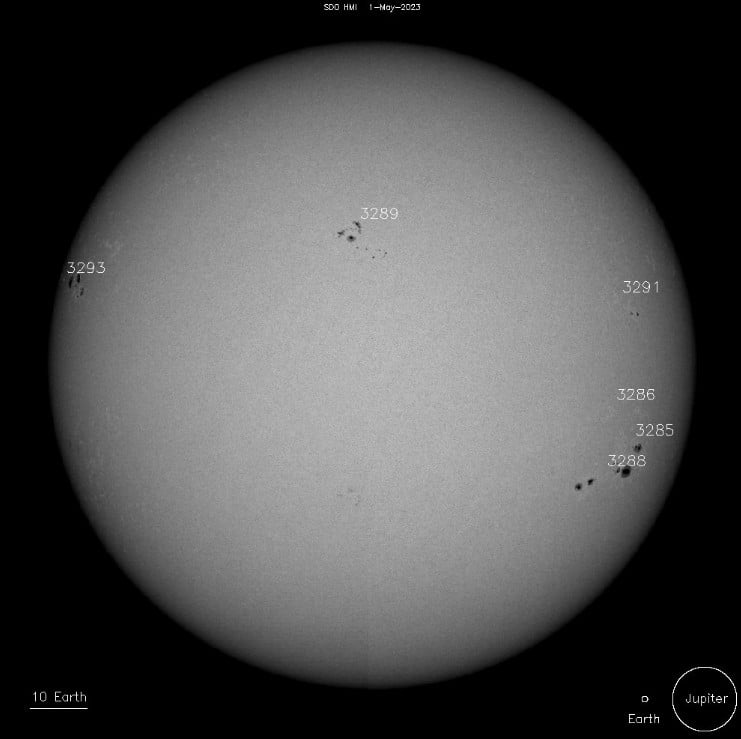
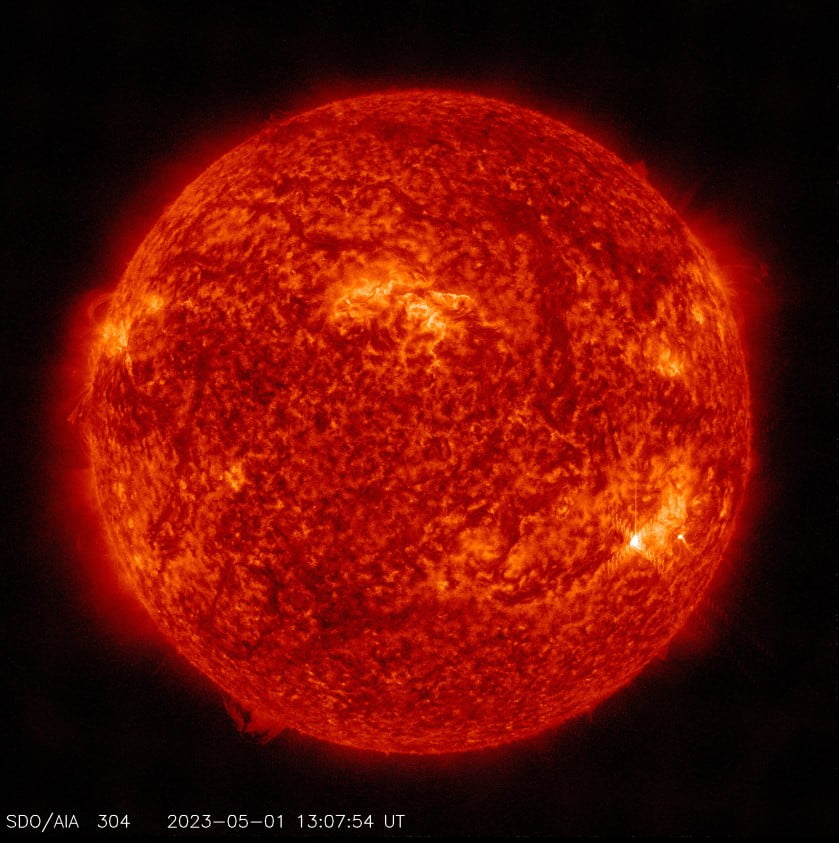
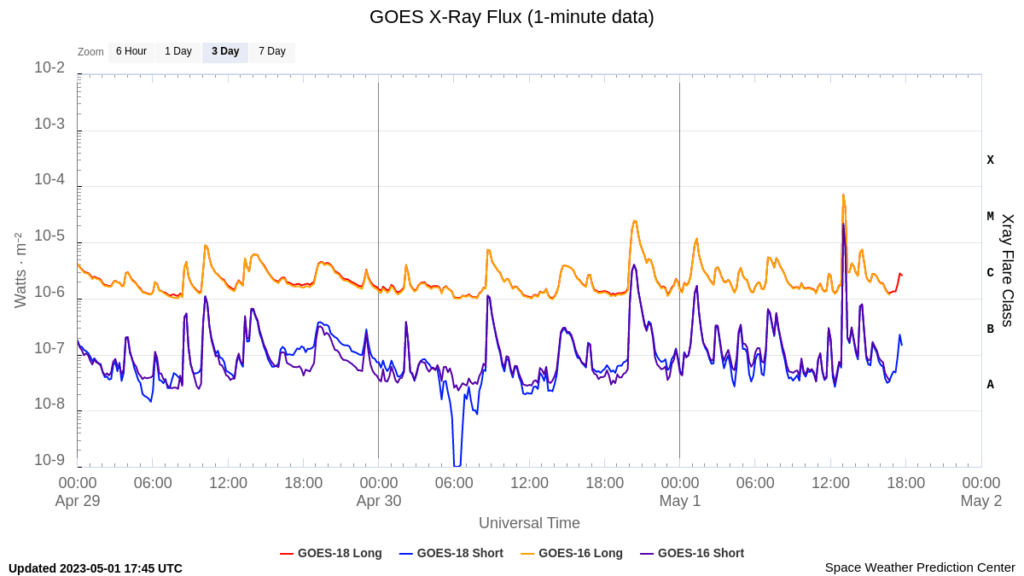
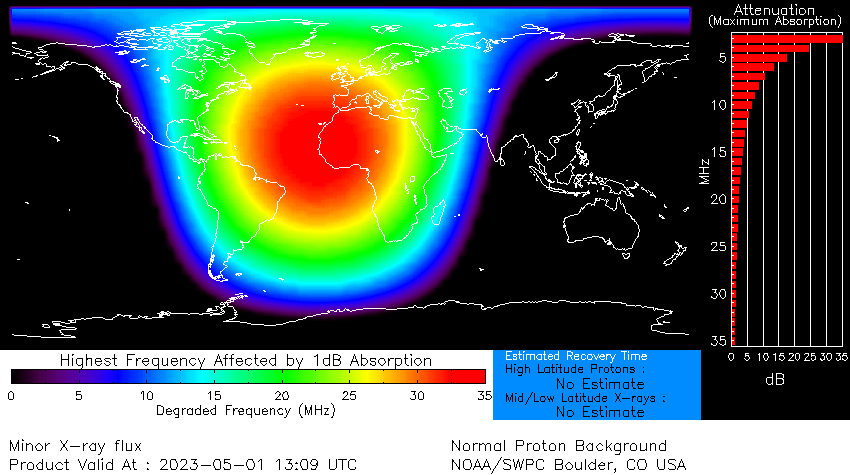
A CME was associated with a C4.2 solar flare that erupted at 13:45 UTC from Region 3285, close to 3288 — the source of today’s M7.1 flare. It might have some influence on Earth in about 2 to 3 days.
The Space Weather Prediction Center (SWPC) forecasts a 40% probability of M-class solar flares occurring within the next 48 hours, while the likelihood of X-class flares is estimated at 5% during the same time period.
Solar activity was at moderate levels in 24 hours to 12:30 UTC today, with the strongest flare of the period being M2.4 at 20:28 UTC on April 30 from newly numbered Region 3293 (beta).
The greater than 2 MeV electron flux reached high levels during the period, with a peak flux of 7 830 pfu at 16:25 UTC on April 29. The greater than 10 MeV proton flux was at background levels. The greater than 2 MeV electron flux is expected to reach high levels through May 3 and the greater than 10 MeV proton flux is expected to continue at background levels.
Solar wind parameters continued to be elevated under negative polarity CH HSS influence. Solar wind speed ranged from 435 – 564 km/s. The total field ranged from 1 – 5 nT while the Bz component was between +/-4 nT. Phi angle was predominantly negative.
Solar wind parameters are expected to be enhanced through May 3 due to the influence of multiple, negative polarity CH HSSs. Additional influence from the periphery of a CME that left the Sun on April 29 is possible late on May 2 and into May 3.
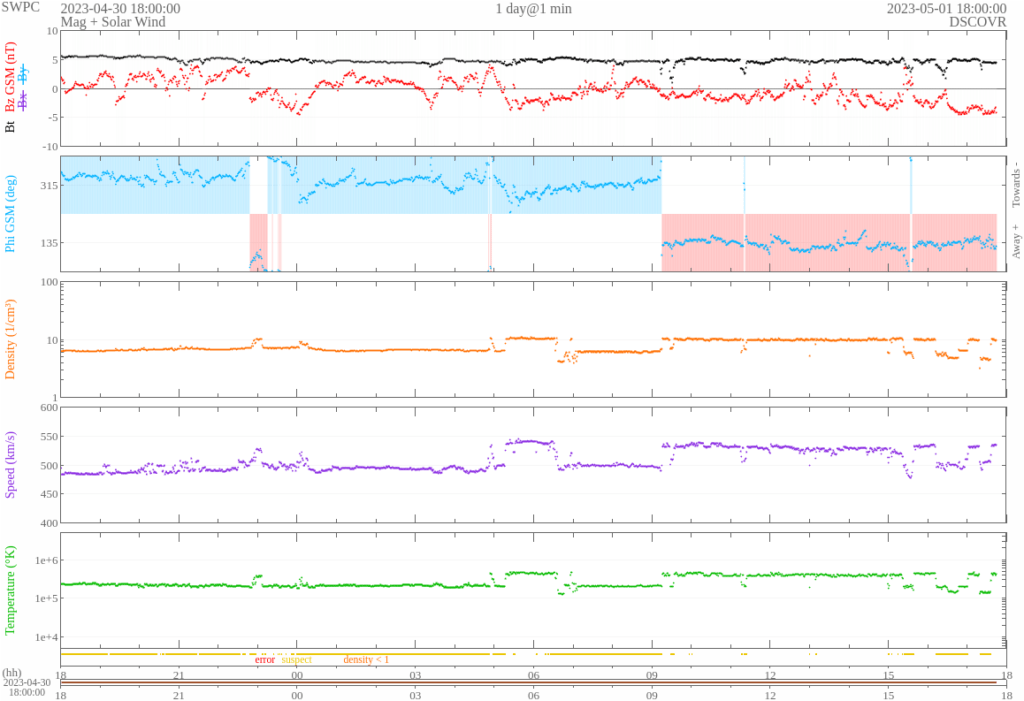
The geomagnetic field was at quiet to unsettled levels in 24 hours to 12:30 UTC today. It is expected to reach unsettled to active levels through May 3 due primarily to continued negative polarity CH HSS influence. There is a possibility for additional transient influence due to April 29 CME.
References:
1 Forecast Discussion – Issued 2023 May 01 1230 UTC – Prepared by the U.S. Dept. of Commerce, NOAA, Space Weather Prediction Center
Featured image: M7.1 solar flare at 13:09 UTC on May 1, 2023. Credit: NASA SDO/AIA 304, The Watchers

Commenting rules and guidelines
We value the thoughts and opinions of our readers and welcome healthy discussions on our website. In order to maintain a respectful and positive community, we ask that all commenters follow these rules.